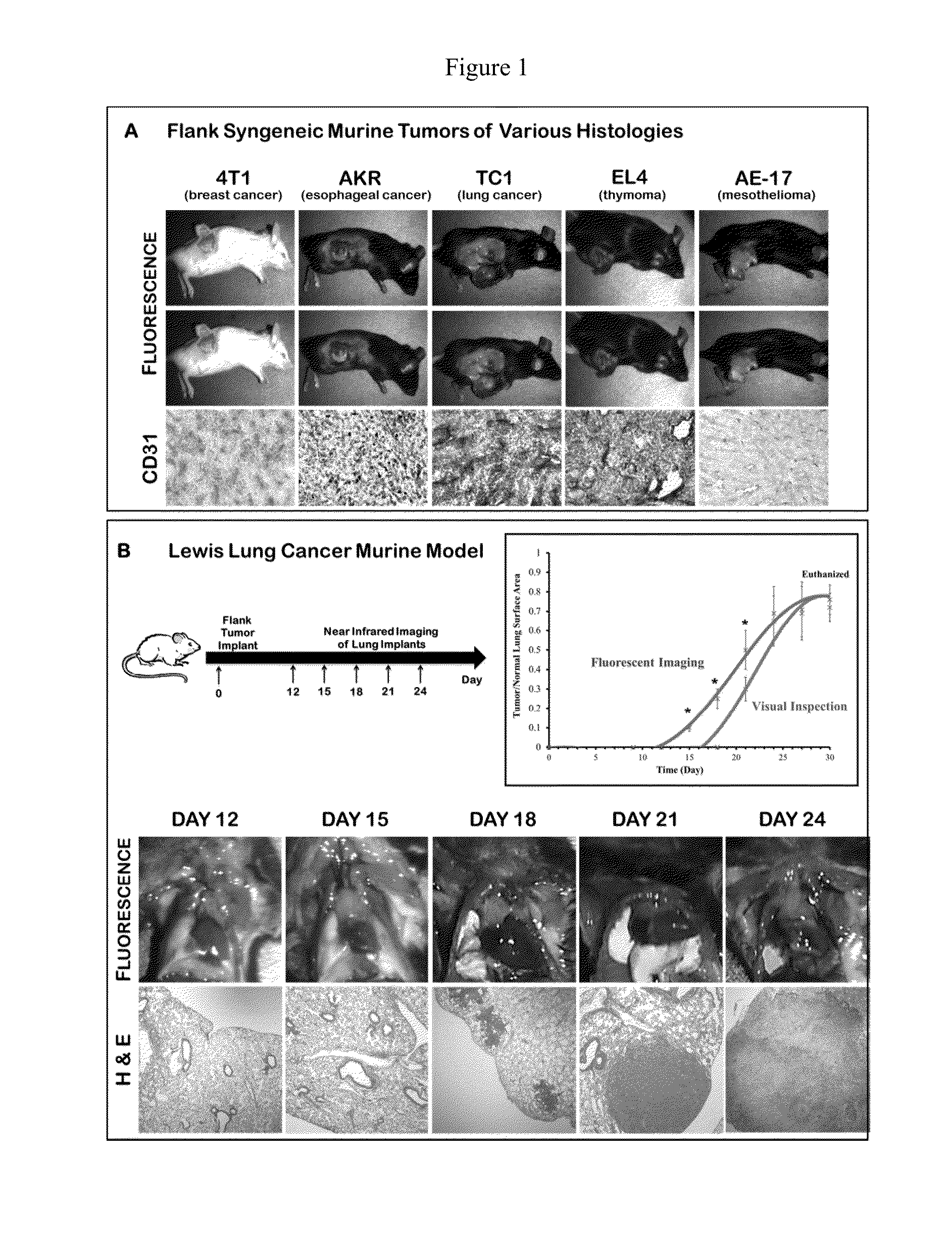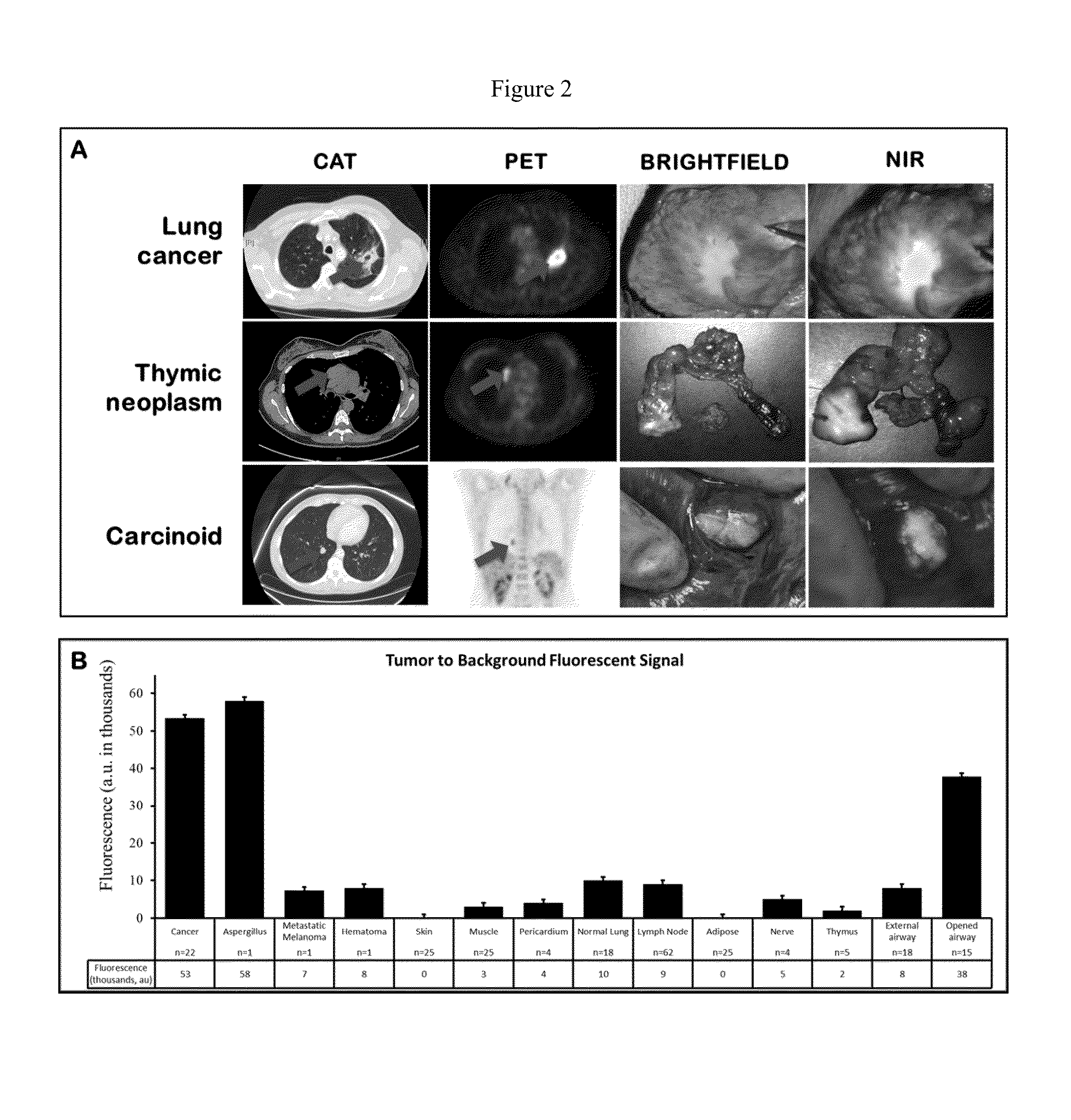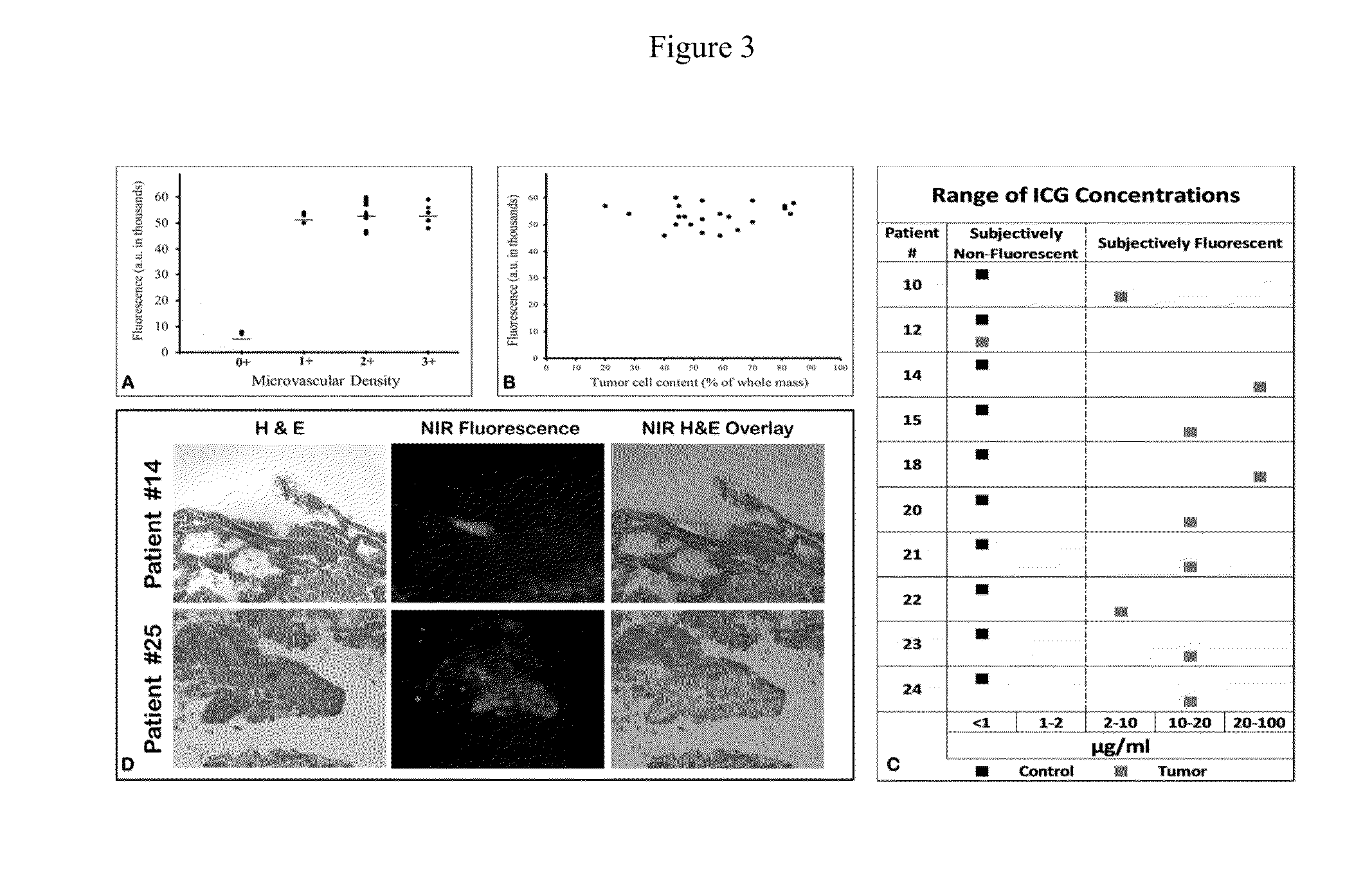Methods for medical imaging
a medical imaging and method technology, applied in the field of medical imaging, can solve the problems of limited success in humans, lack of response ability, and use of fluorescein, and achieve the effect of improving the depth of penetration and imaging quality
- Summary
- Abstract
- Description
- Claims
- Application Information
AI Technical Summary
Benefits of technology
Problems solved by technology
Method used
Image
Examples
example 1
NIR Labeling of Small Animals In Vivo
[0128]Initially, in order to determine if the EPR effect could deliver a MR contrast agent to solid tumors, we conducted a proof-of-concept study in multiple animal models of malignant disease. Fifty female C57bl / 6 mice were injected with five different syngeneic cancer cell lines (4T1 breast cancer, TC1 lung cancer, EL4 thymoma, AE17 mesothelioma, AKR esophageal cancer) into their flanks. After the tumors were well established (˜200 mm3), 7.5 mg / kg of ICG was administered via the tail vein. The next day, a tissue spectrometer was used to semi-quantitate fluorescence from the tumor, surrounding tissue and 12 organs. (Mohs 2010) The mean fluorescence from the tumor was 54,238 arbitrary units (au) (range 46,283-60,000). The mean fluorescence from surrounding normal tissues and organs averaged 4863±1254 au. Tumors were harvested, sectioned and assayed for microvessel density to determine if there was a correlation between tumor vascularity and fluor...
example 2
Tumor Fluorescence During Surgical Resection
[0131]To determine if indocyanine green would be delivered to human tumors, patients undergoing cancer surgery were first imaged in vivo at the onset of the operation. At the time of surgery, the chest was opened and inspected by standard visualization and manual palpation. In all cases, the surgeon could immediately see or feel the tumor. A dual camera head with a brightfield and a NIR output was then used to visualize tumor fluorescence (FIG. 7). In 16 out of 27 (59%) cases, the dual camera head could detect tumor fluorescence at various depths of penetration into the tissue. In the remaining 11 cases, the tumor was located too deep in the organs to image by NIR. The deepest tumor that could be detected was ˜1 cm from the surface of the organ. Attempts to quantitate tumor fluorescence in vivo were not feasible for several reasons including variations in operating room conditions, lack of miniaturized tissue spectrometer with safe laser l...
example 3
Ex Vivo Analysis of Tumor Fluorescence
[0132]Following in vivo imaging, the patients then underwent a standard-of-care surgical resection of the tumor. Once removed from the patient, the specimen was examined, opened, biopsied and analyzed ex vivo (FIG. 2a). Every case was photo-documented both by brightfield imaging and NIR imaging. Qualitatively, NIR imaging revealed strong fluorescence in 25 out of 27 (92%) masses. Then, the hand held spectrometer was used to semi-quantitate tissue fluorescence. Each tumor had 4 measurements at four perpendicular locations and the center of the tumor (total of 20 measurements / tumor). Mean fluorescence in the human tumors was 53,304±4193 au in 25 out of 27 masses (93%) (FIG. 2b). We conjectured that the center of the tumor might be less fluorescent than the periphery due to necrosis or, conversely, that the center of the tumor might be more fluorescent than the periphery due to increased ICG retention. We found neither to be true. The fluorescence ...
PUM
 Login to View More
Login to View More Abstract
Description
Claims
Application Information
 Login to View More
Login to View More - R&D
- Intellectual Property
- Life Sciences
- Materials
- Tech Scout
- Unparalleled Data Quality
- Higher Quality Content
- 60% Fewer Hallucinations
Browse by: Latest US Patents, China's latest patents, Technical Efficacy Thesaurus, Application Domain, Technology Topic, Popular Technical Reports.
© 2025 PatSnap. All rights reserved.Legal|Privacy policy|Modern Slavery Act Transparency Statement|Sitemap|About US| Contact US: help@patsnap.com



